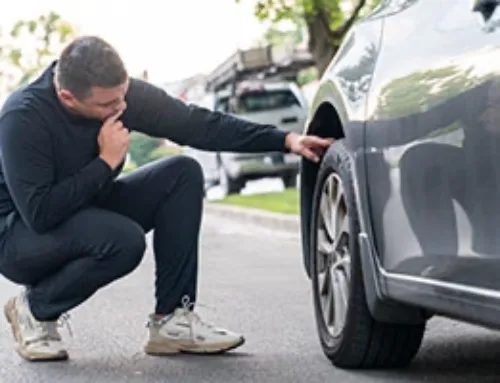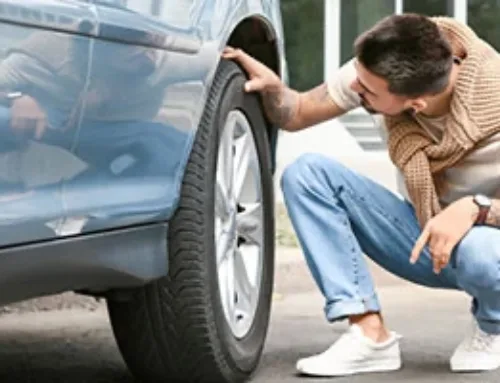Table of Contents
You’ve probably been to your tire service center and been told that your tires need to be rotated or aligned—and you’ve probably thought: “Aren’t they the same thing?” Well, we’re here to tell you that wheel alignment and tire rotation are different and are both essential for the overall performance of your vehicle and for keeping your tires in good condition for a long time. We know they might sound a bit technical, but understanding the basics behind them is something every driver should know. So what exactly are they, and how do they differ? Let’s find out!
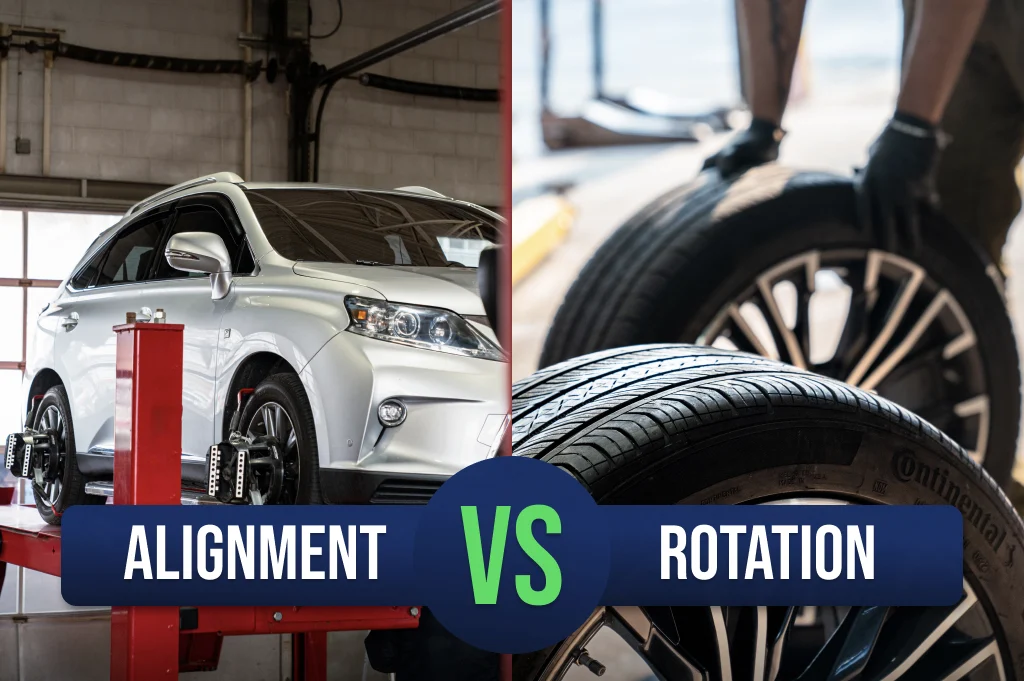
Key differences between wheel alignment and tire rotation
Let’s start with the key differences between wheel or tire alignment and tire rotation. Wheel alignment and tire rotation serve slightly different purposes. Alignment ensures your wheels are set to the car manufacturer’s specifications for alignment, maximizing your tire life and keeping your vehicle from veering to one side or the other. Tire rotation is also focused on maximizing your tire lifespan by making sure you get even wear. So both procedures help extend your tires’ lifespan and keep your car driving smoothly.
As well as serving slightly different purposes, the procedures for rotation and alignment are different. Alignment involves adjusting the angles of the wheels, while rotation involves literally moving tires from one wheel to another. But either way, if you’re going to your automotive service center and they recommend carrying out one of these procedures, they should also do the other one at the same time.
Wheel alignment in depth
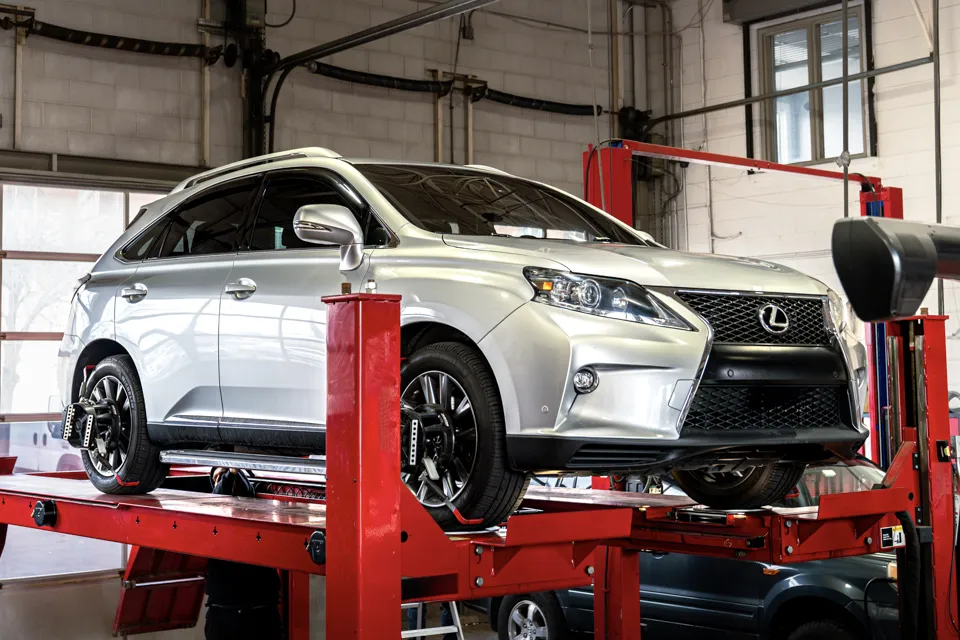
Wheel alignment is all about adjusting your vehicle’s suspension—the system that connects your car to its wheels. It’s not about tweaking the tires or wheels themselves. Instead, the suspension is adjusted to align the wheels to the car’s body, each other, and the road. When your wheels are aligned properly, they’re parallel to each other and perpendicular to the road, although if you’re into racing, you may have your tires aligned in a slightly non-standard way.
So, why is this so important? Well, proper wheel alignment helps your vehicle to steer straight, reduces tire wear, improves fuel efficiency, and gives you an overall smoother ride. Plus, it’s crucial for your safety—misaligned wheels can cause your car to pull to one side, which can make steering less predictable.
What does a wheel alignment service do?
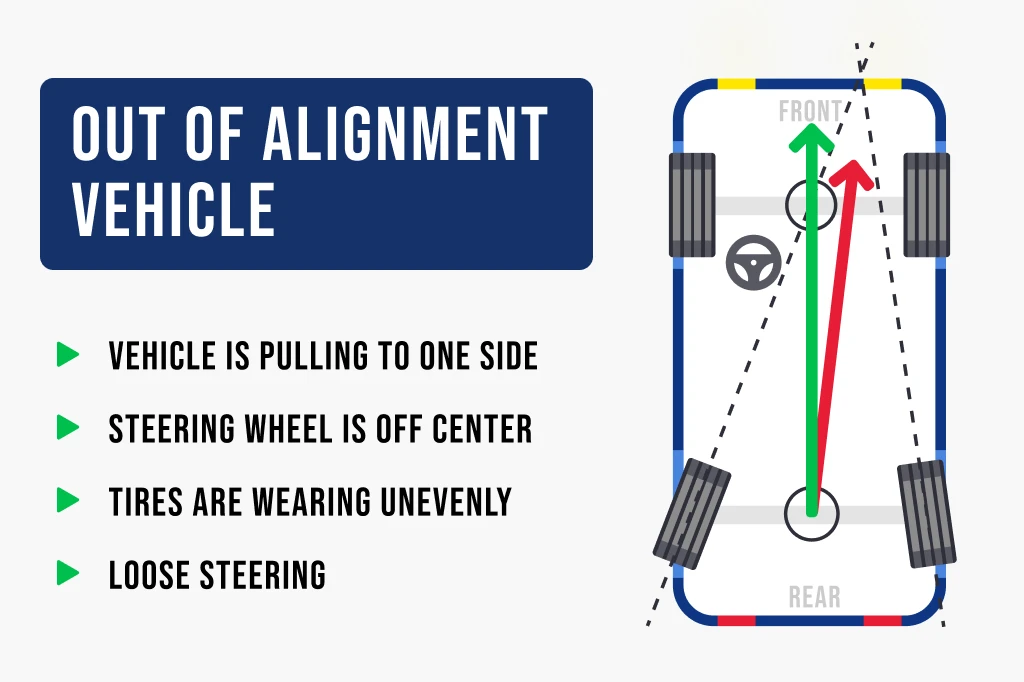
Using a special wheel alignment tool, your technician will check various angles to make sure they match the manufacturer’s specifications. These include:
Camber
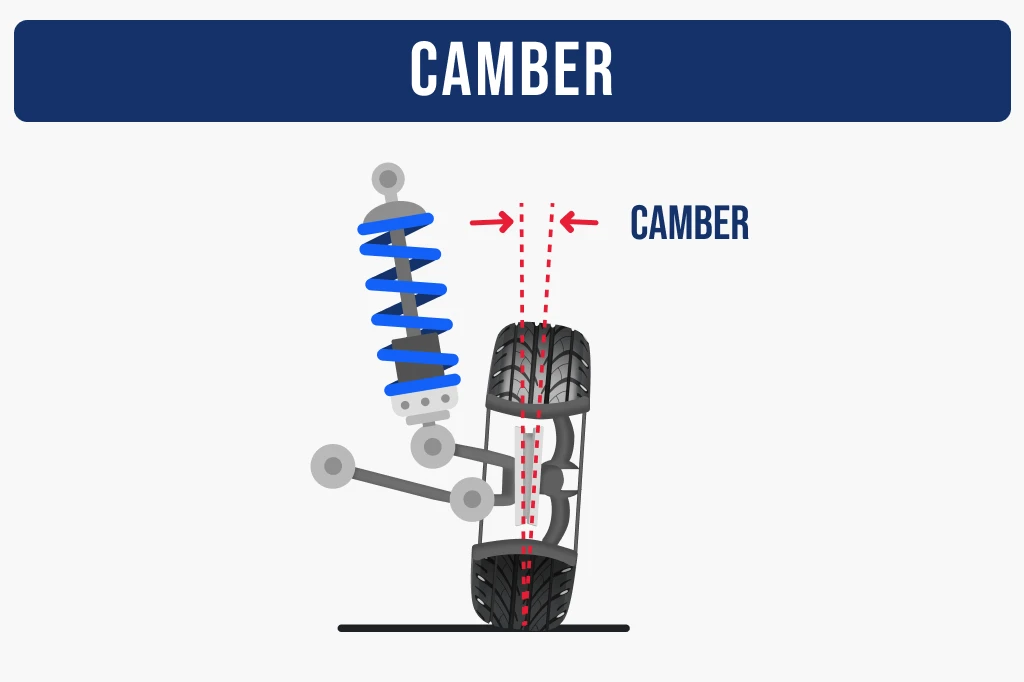
Camber is the angle your tire makes to the left or right when looking at your vehicle head-on. They should be straight but may lean in or have an outward tilt. This can affect cornering.
Caster
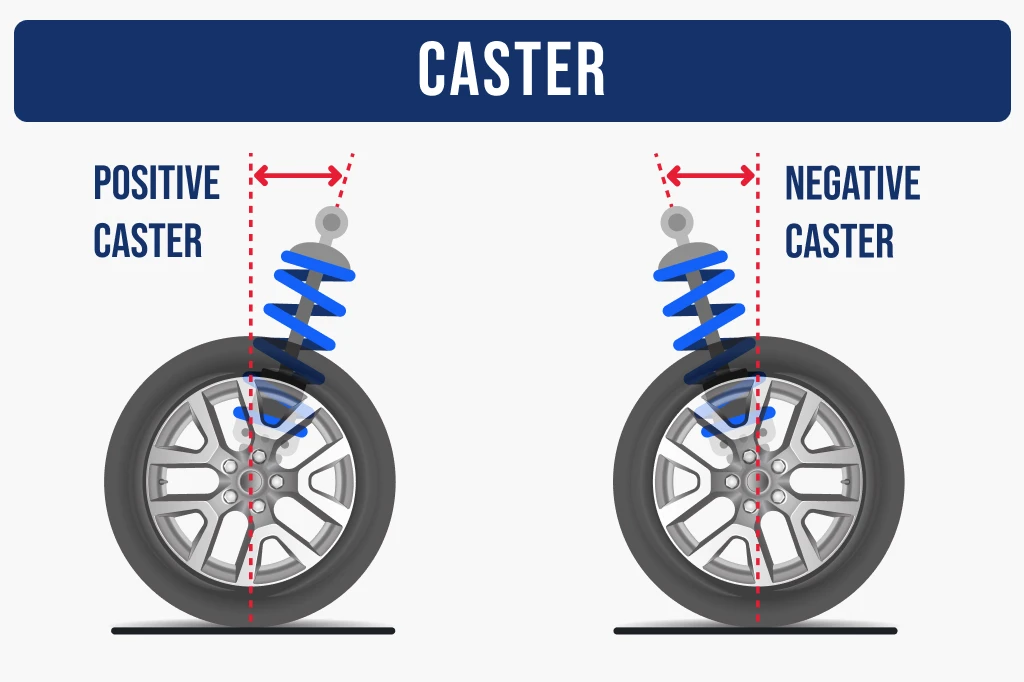
Caster is the angle your steering axis makes if you look at it from the side. This is important for smooth steering and stability.
Toe
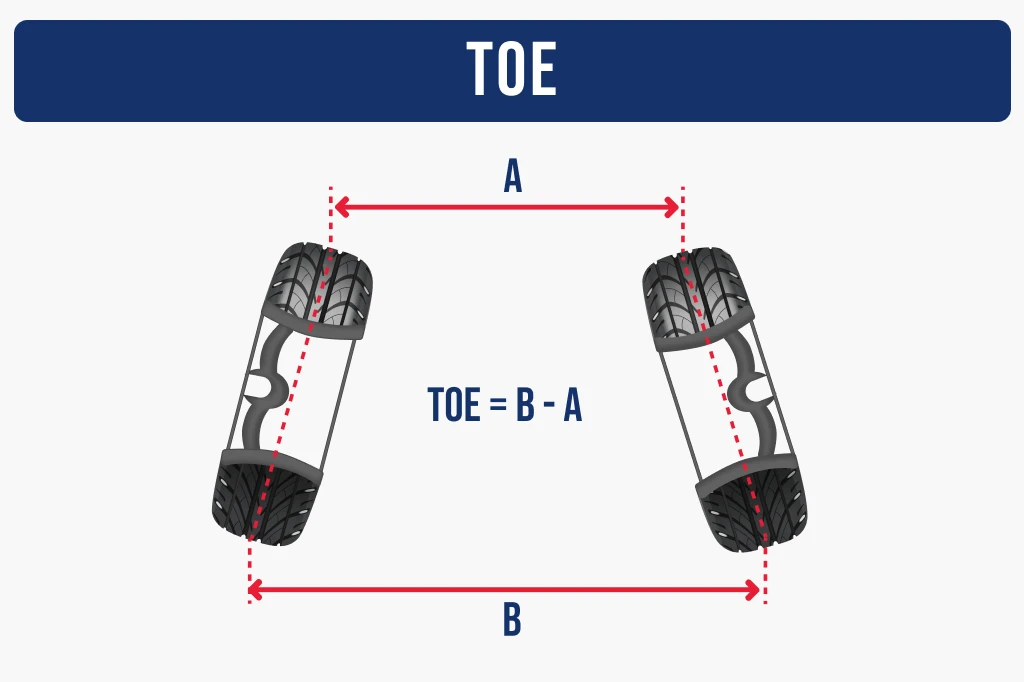
Toe angles are how much your wheels turn in or out when you look at them from above. You can remember this by thinking about whether you’re sticking your toe out or in when looking down at your feet.
Getting all these in proper alignment is important for a smooth driving experience.
How do you know if your wheels need alignment?
If your wheels need alignment, you may notice some telltale signs. These can include:
- Your car drifts to one side or the other when you’re trying to drive straight
- Your steering wheel not returning easily after a turn
- Your steering feels loose
- Your tires are showing signs of uneven tread wear (read more in this article)
If you’ve noticed any of these signs, it might be a good idea to take your car to a reputable mechanic for a check-up. Just remember, regular maintenance can help prevent these problems and prolong the life of your car!
How much does a wheel alignment cost?
Generally speaking, a wheel alignment can cost between $60-$200 depending on whether you have a two or four-wheel alignment. The cost will also depend on your location and the specific shop you’re going to. It’s recommended to get a wheel alignment whenever you rotate your tires. You can also get a wheel balancing and alignment check at the same time.
Understanding tire rotation
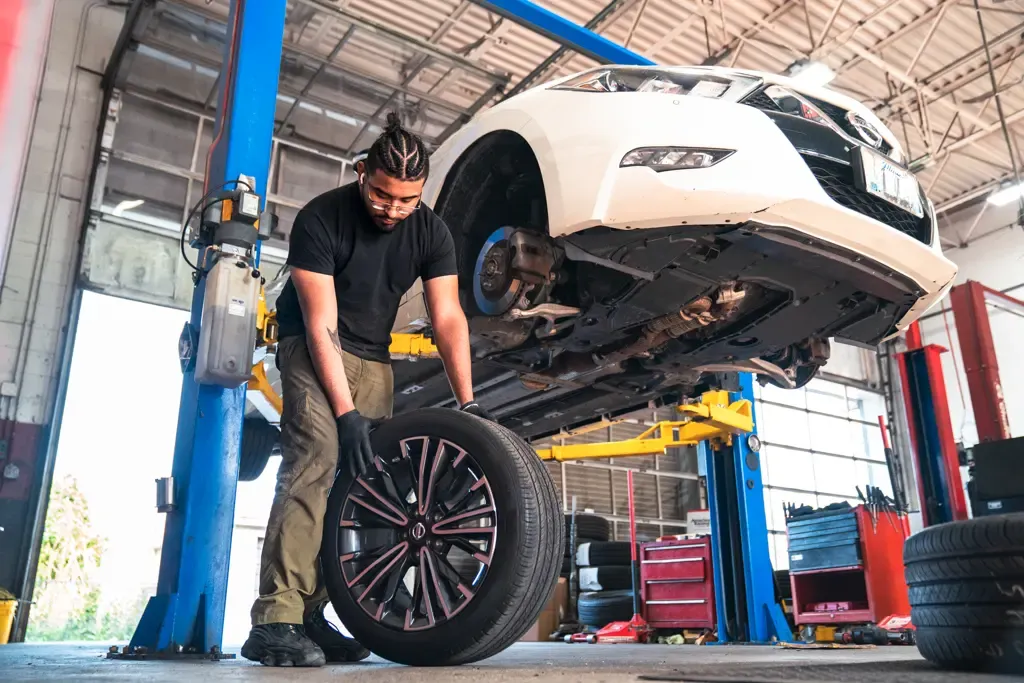
Next up, we have tire rotation. Unlike wheel alignment, tire rotation involves the tires themselves. It’s the practice of moving your vehicle’s tires from one position to another—front to back, left to right. The purpose? To ensure even tire wear. You get uneven tire wear because the weight of a vehicle isn’t evenly distributed. Excessive tire wear on a particular tire can also come from having a two-wheel or four-wheel drive vehicle. For example, in a front-wheel drive car, your front tires bear the brunt of braking and steering, so they usually wear out faster than the rear ones. Regular tire rotation helps balance this out, extending the life of your tires, improving your vehicle’s performance, and saving you money in the long run.
Tire rotation pattern
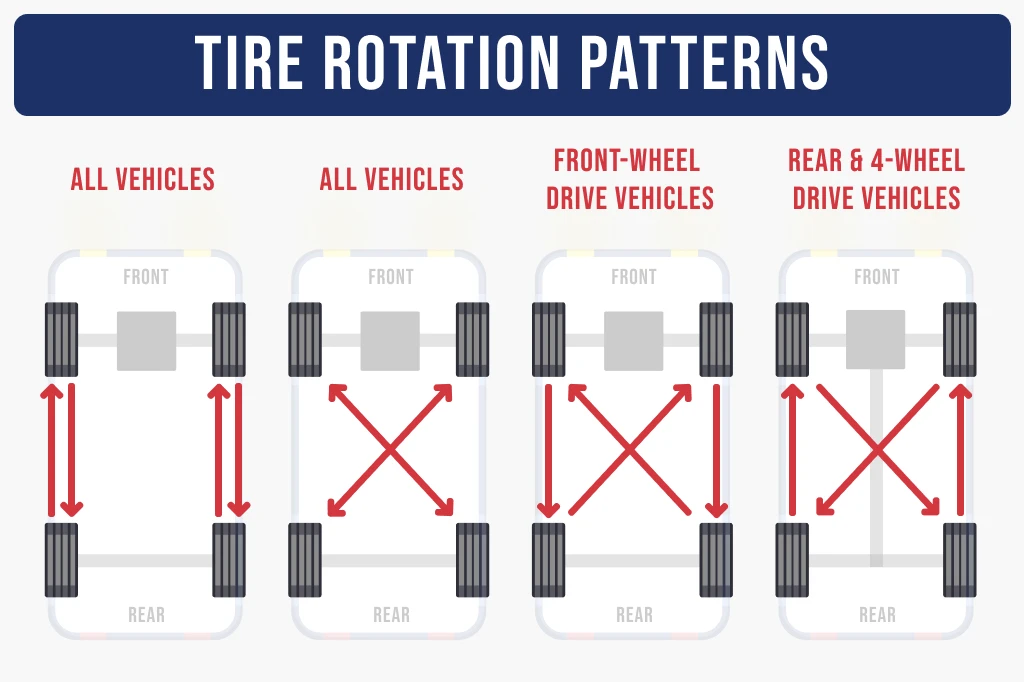
There are various patterns you can rotate your tires on, and here are a few of the more common ones:
- Forward or rearward crosses are used for two-wheel drive vehicles. If you have front-wheel drive, the front axle tires are moved straight back, and the rear tires diagonally forward. And the opposite is done for rear-wheel drive vehicles.
- X-pattern is used on most standard four-wheel drive vehicles where the tires are moved diagonally across from front left to back right, etc.
- Front-to-back is best if you have directional tires. Then you’ll switch left front to left back and right front to right back.
- Side-to-side is used if you have different tire sizes on your front and rear axles. In this case, you can’t switch between front and back, so you’ll move the left to the right and vice versa.
Do you really need to rotate your tires?
Rotating your tires is crucial because each tire on your vehicle handles a different amount of stress due to weight distribution, turning, and braking. Without rotation, one set of tires could wear out faster than the others, which can lead to poor performance, reduced gas mileage, and even safety issues. Plus, regular tire rotation can prolong the life of your tires, saving you money in the long run.
How often do you rotate tires?
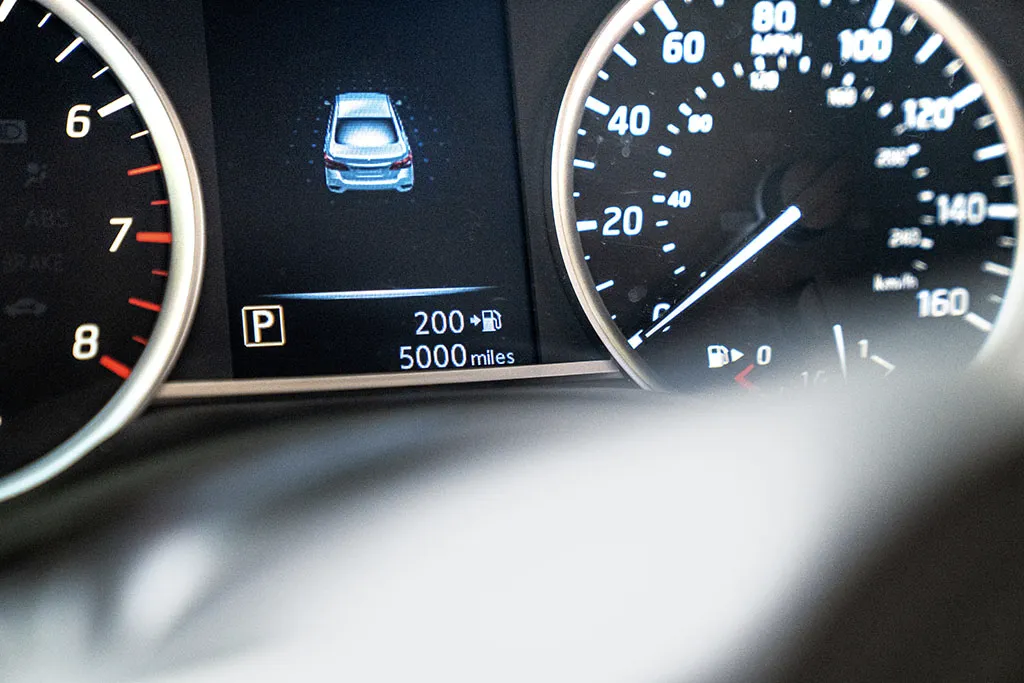
To know when your tires need rotation, keep an eye on your tire tread wear. If you notice uneven wear patterns, it’s time to rotate. Most manufacturers recommend a tire rotation every 5,000 to 7,000 miles, but your vehicle’s manual will have the most accurate information. You can also do it at the same time as your vehicle’s oil change schedule for convenience.
However, the recommended frequency can vary based on the type of tires you have, your driving habits, and your vehicle type. For instance, performance tires may need more frequent rotation. Always check your vehicle owner’s manual or consult your tire manufacturer or mechanic for the most accurate advice tailored to your specific situation.
Frequently Asked Questions
What is the wheel alignment?
Wheel alignment, also known as tire alignment, refers to the adjustment of the angles of your vehicle’s wheels to the specifications recommended by the vehicle manufacturer. Proper wheel alignments ensure that your tires meet the road at the correct angle, your wheels are pointing straight, and your wheel assembly is correctly positioned in the wheel wells. This is crucial for maximizing the lifespan of your tires, ensuring smooth handling, and keeping your vehicle running efficiently. If your wheels are misaligned, it could lead to premature tire wear and can even affect your safety on the road.
What will happen if the wheel alignment is bad?
If your wheel alignment is bad, your car might start to drift or pull to one side while driving, which can be quite unnerving. You might also notice uneven or rapid tire wear since the tires aren’t hitting the road at the proper angle. This can lead to you needing to replace your tires more frequently, which can get expensive. Bad wheel alignment can decrease fuel efficiency, as your car must work harder to move forward. Lastly, improper tire alignment can affect the handling and safety of your car, making it harder to steer and control. So, if you notice any of these signs, it’s best to have your tire alignment checked out by a professional.
What does a tire rotation do?
Tire rotation involves moving your tires to a different wheel so they don’t wear unevenly. This extends the lifespan of your tires, helps maintain your vehicle’s handling and traction, and can even improve gas mileage. Think of it as rearranging furniture to avoid missing one spot on your carpet.
If my steering wheel shakes, does that mean I don’t have proper alignment?
A shaking steering wheel can be a sign of improper alignment, but there are other, more common causes of the potential problem. If you feel a vibration in your steering, you may be overdue a tire balancing, or you might have problems with your suspension or brake system. That said, improper alignment is a common reason for your steering wheel vibrating or feeling “off” when driving. If you notice this, having your car checked out by a professional as soon as possible is a good idea.
With tire rotation, do they ever just swap my rear axle tires?
Yes, in some tire rotation patterns, they may just swap your rear axle tires. These patterns vary based on whether your car is a front-wheel drive, rear-wheel drive, all-wheel drive, or four-wheel drive and whether your tires are directional or non-directional. You probably have a performance car or another vehicle with different-sized front and rear tires to have a dual rear wheels rotation. The goal of tire rotation is to even out the wear on each tire by moving it to a different position, as each position wears the tires slightly differently. It’s always best to follow your vehicle manufacturer’s recommended rotation pattern, which can be found in your vehicle’s manual.





